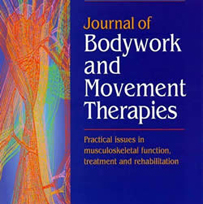Introduction
This article gives a great summary of popular movement screening methods and their relevance (and possible necessity) to improving Pilates programming and instruction.
“If disciplines like Pilates are going to be accepted as scientifically valid members of the team influencing the rehabilitation process of CLBP the discipline may need to accept that formal testing or assessment of their clients might be a necessary step to take. Movement testing seems to be the most appropriate style of assessment that will also provide useful information as a working tool.”
Chris Lavelle
Principal Trainer,
Vice President Pilates Alliance of Australasia
Certified DNS Exercise Trainer,
Rehabilitation Prague School
0412 652 409

by Warrick McNeill, Dip. Phyty. (NZ) MCSP.
Excerpt shared courtesy of Elsevier, Journal of Bodywork and Movement.
‘Motion is life’ Gray Cook (Cook et al., 2010) quotes Hippocrates, paraphrasing it still further that ‘movement symbolises life.’ Cook believes that movement is fundamental, ‘once that is managed other factors like strength, endurance, co-ordination and acquisition of skill also play a role in (injury) prevention. Movement comes first.’
The development of the science and practice of analysing movement and then interpreting the results so that those in musculoskeletal pain and those who are merely at risk of developing pain can be rehabilitated or prevented from suffering appears to be at the forefront of current study and research. The blurring of the distinctions between the target populations of those to be analysed (pain and non-pain groups) have been discussed in a previous editorial in this section of this journal, as have two types of exercise to apply to the finding of uncontrolled movement (McNeill, 2014a, McNeill, 2014b). Movement screening or analysis itself deserves further attention.
Pilates is perhaps only now beginning to be partially understood from a scientific point of view. Pilates has been reported as an exercise form that can help those with chronic low back pain (CLBP) (La Touche et al., 2008). Another systematic review aimed at defining Pilates exercise and how it is applied in the treatment of people with CLBP was published in 2012 as the authors identified that research into Pilates is difficult to interpret because of a lack of such a definition (Wells et al 2012). By defining Pilates as it is described in current peer reviewed journals it can be compared to original descriptions provided by Joseph Pilates to see if there are differences – particularly modifications of the exercise form for working rehabilitatively with clients with CLBP as opposed to more general applications of Pilates for the promotion of health.
Pilates was found by Wells and her co-authors to be ‘a mind-body exercise that requires core stability, strength and flexibility, and attention to muscle control, posture, and breathing. Exercises can be mat-based, or involve the use of specialised equipment. Traditional Pilates principles of centring, concentration, control, precision, flow, and breathing may be relevant to contemporary Pilates exercise. In people with low back pain, posture may be a critical component of Pilates exercise, but traditional principles, apart from breathing, may be less important.’
Interestingly a majority of the papers analysed for Wells’ review were opinion pieces, (such as is this paper) and there were only 17 papers included that focussed on Pilates in relation to participants with low back pain compared to 49 that looked at Pilates with healthy participants. It appears that the application of Pilates as a rehabilitative tool for CLBP is therefore not yet reliably confirmed. Perhaps the broad definition of CLBP with its inclusion of different subgroups of causes of CLBP as yet not fully understood suggests that in rehabilitation focussed Pilates, attempts to assess for the faults to be ‘fixed’ by Pilates need to be undertaken. Research is required looking for actual faults to be managed with Pilates technique or modified Pilates. Modifications could be as simple as avoiding imprint for flexion related low back pain with the maintenance of a neutral spine. This suggests that Pilates Teachers in rehabilitative Pilates, at least, need to be performing a more formalised assessment procedure. As Pilates is about movement and Pilates Teachers are expert in teaching movement it suggests rather clearly that movement is what Pilates Teachers should be formally assessing, recording and managing. It appears that currently Pilates Teachers are managing movement but not necessarily formally assessing movement first.
Article continued here: Are movement screens relevant for Pilates, circus or dance?
Full Members: JBMT Subscription
Have you signed up for your free subscription to the Journal of Bodywork and Movement Therapy yet?
Full members with an active PAA membership have a subscription to the JBMT included with membership (lists are updated quarterly).
Follow this link for instructions on how to access your complimentary subscription to the Journal: JBMT registration instructions

Comments are closed.